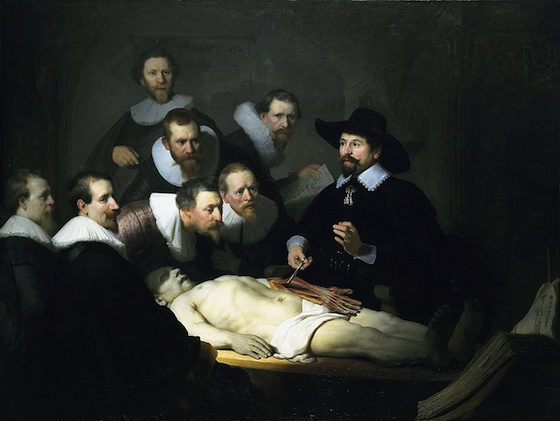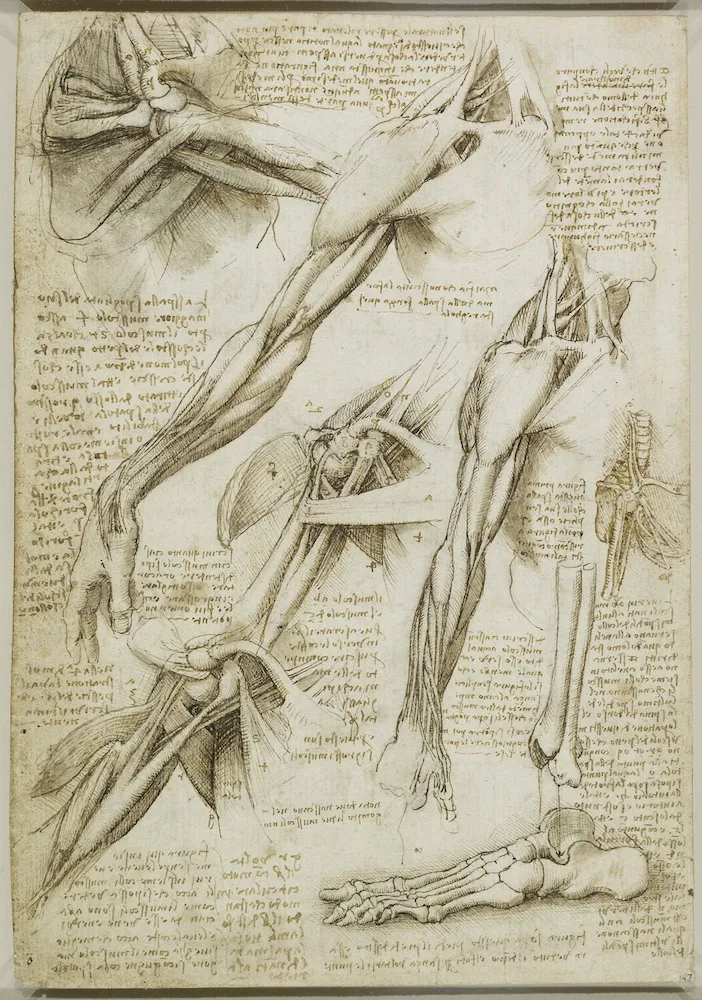I Baroque into the Expansion of Scientific Knowledge in Art
Background Information
The Baroque era was a milestone where scientific observation increased. Many world-renowned scientists greatly influenced the subject matter and intensity that many artworks displayed, such as the Anatomy Lesson of Doctor Nicolaes Tulp by Rembrandt. The painting was created using oil paint on canvas. The artwork was created in 1632 and is hanging in the Mauritshuis museum in The Hague (Zygmont). Rembrandt created a work of art that was different from what other artists created in reference to group paintings. Others would have “recreated a previous group image—inserting new heads in place of old ones'', however that was not the case for Rembrandt (Zygmont). He created one of the “most recognizable images in the history of painting” (Zygmont). The painting itself is one of many group portraits that were made for the boardroom of the Guild of Surgeons. The body used for public autopsies were "usually that of a criminal, in this case Adriaen het Kint"(Unknown).During the 17th century in Holland, artists looked to “professional and the middle class for patronage”(Zygmont). Furthermore, the middle class and merchant class looked for artists in return to produce new kinds of art that met their needs (Zygmont). This anatomical piece “has a central motif, an anatomy lesson, and a protagonist, the praelector or reader” (Zygmont). Its subject matter revolves around an anatomy lesson that Tulp gave in January 1632 (Zygmont). Rembrandt captured the men at “a specific instant in time, but in fact the painting is a careful and very well thought out composition” (Unknown). The viewer’s attention is focused on Tulp demonstrating “how the muscles of the arm are attached. The corpse’s arm has been laid open for the purpose” (Unknown).

Italian Renaissance artists wanted to create a more realistic and lifelike portrayal of the human body. During this time period, there was speculation "that his anatomical interest was sparked during his apprenticeship in Verrocchio’s workshop" (Unknown). He depicted the need to "studied human anatomy to improve his ability to capture the human form in great detail"(Cizek). It is said that he used cadavers to help him in this precision. His findings from these studies were "recorded in the famous anatomical drawings, which are among the most significant achievements of Renaissance science" (Unknown).
Unknown. “The Anatomy lesson of Dr Nicolaes Tulp.” Museum het Rembrandthuis, 2020, https://www.rembrandthuis.nl/meet-rembrandt/rembrandt-the-artist/most-important-work/the-anatomy-lesson-of-dr-nicolaes-tulp/?lang=en
Unknown. “Leonado da Vinci.” Britannica, https://www.britannica.com/biography/Leonardo-da-Vinci/Anatomical-studies-and-drawings.
Zygmont, Dr. Bryan. “Rembrandt, The Anatomy Lesson of Dr. Tulp.” Khan Academy, https://www.khanacademy.org/humanities/renaissance-reformation/baroque-art1/holland/v/rembrandt-tulp



Very clever title! I chuckled a bit. The part I enjoy about the piece the most, which was not mentioned, is the use of sightlines. The eyes of the subjects seem to be darting everywhere! Some are looking at the anatomy of the arm, some are looking at the Doctor, some appear as if they are looking at the observer. I think the sightlines not guiding the observer to one subject represent a kind of frenzy and chaoticness that came as a result of the scientific expansion. There's too much to keep track of! I think that your commentary in relation to the scientific theme is spot on.
ReplyDeleteFirst and foremost, I love the puns in the title and "Dissection of the Piece" section. Aside from that though, the analysis here is really good. I had never seen this piece before this and I had never heard of the Guild of Surgeons. I am a big fan of art focusing on anatomy and musculature however, and I love the amount of detail put into the dissected arm.
ReplyDeleteNice pun that you included in your blogs title! This is a piece of which I have not came across before, and I do have to agree with you that it is quite interesting to see science included in an art piece! I think its pretty cool how you touched on how the baroque era was such a big milestone for scientific observation. I also really like how the element of color is used to put this piece together for its own observers! Great post!
ReplyDeleteI never really thought of the Baroque period as being open to the scientific aspects of things. Your analysis really opened my eyes to it. I actually love this piece. Each character in the painting has a different face. Some of interest, some of disinterest, and some of slight disgust or worry. While renaissance and Leonardo da Vinci's work seemed more precise, the piece you show above is more to me like a scene than an analysis of science.
ReplyDelete